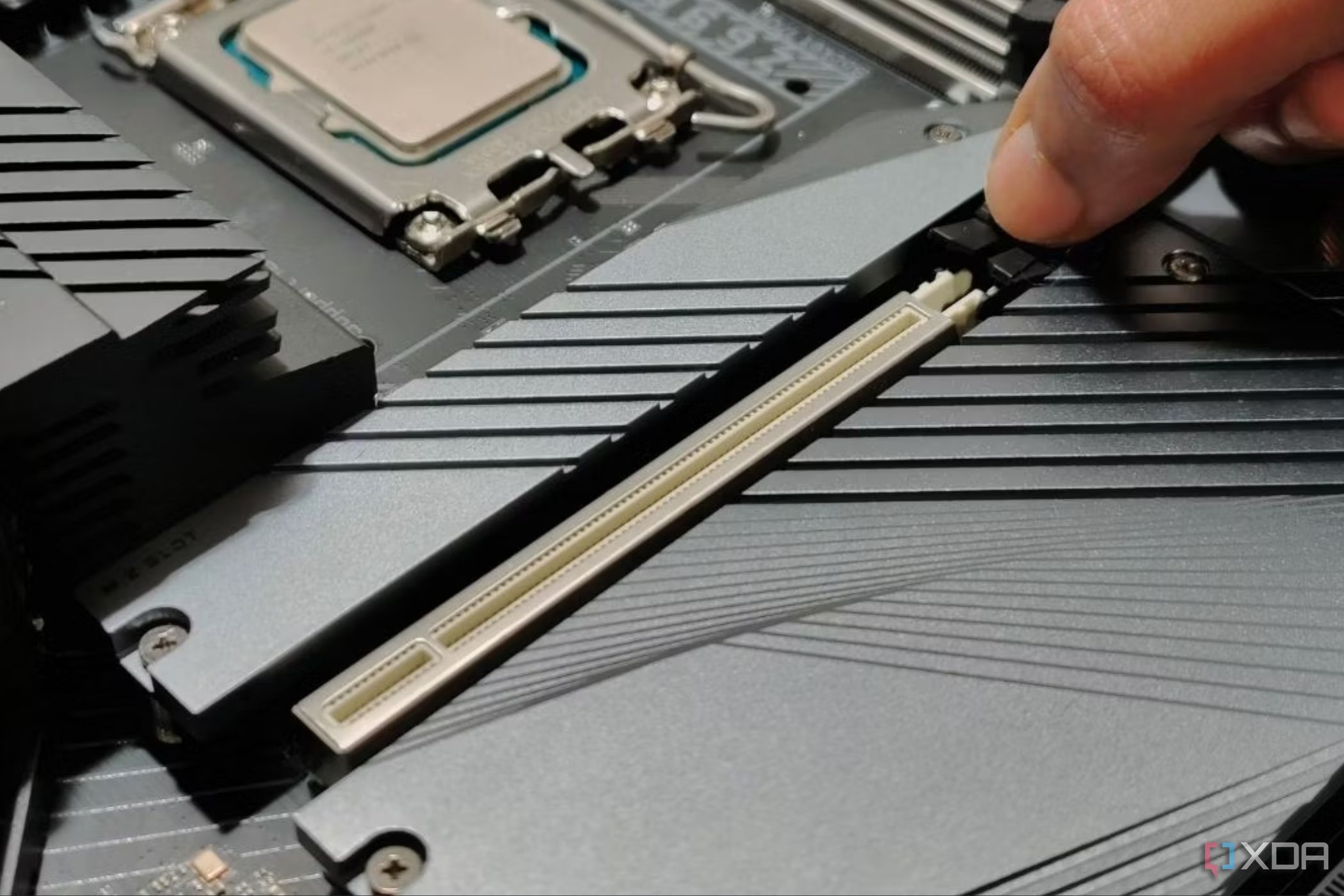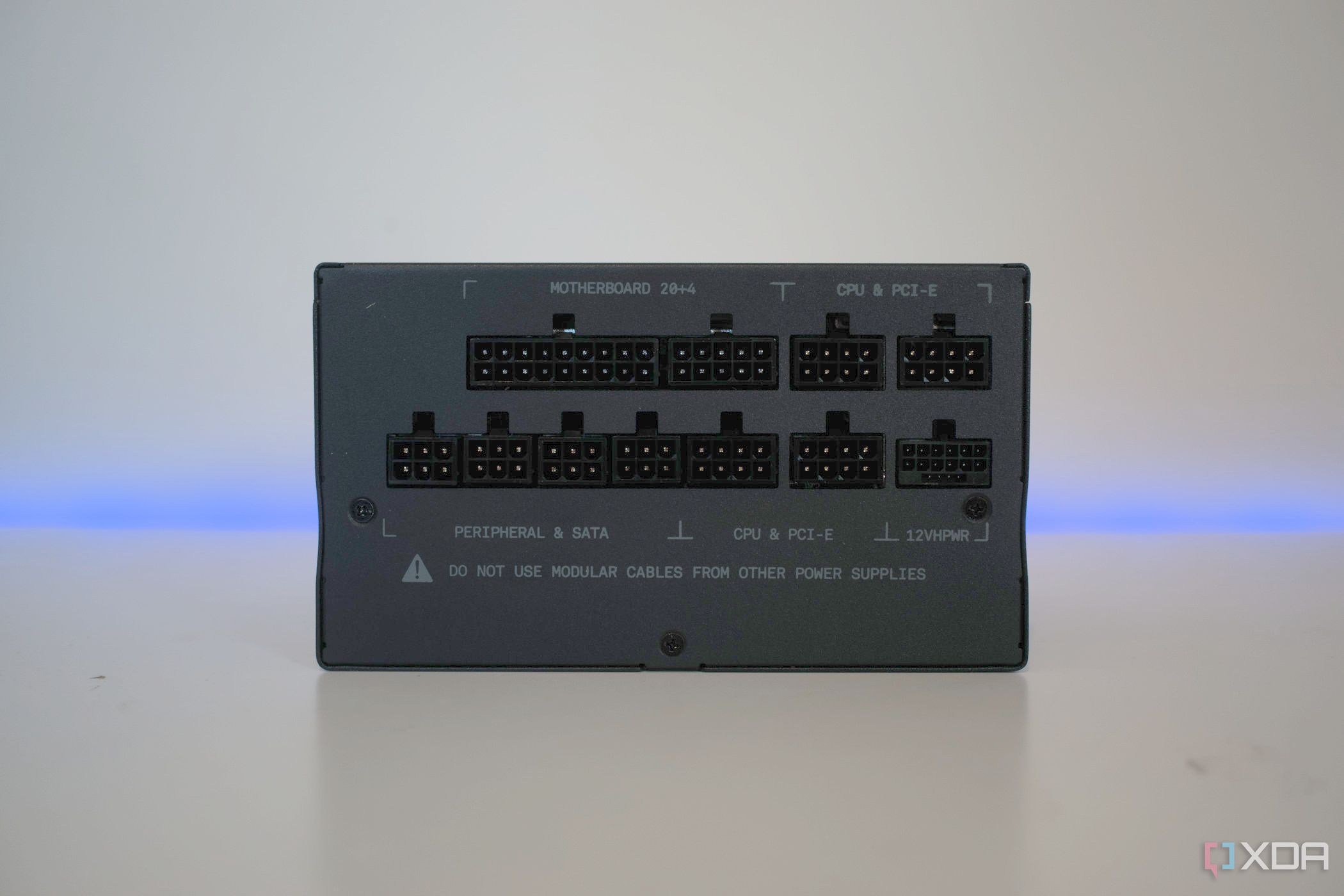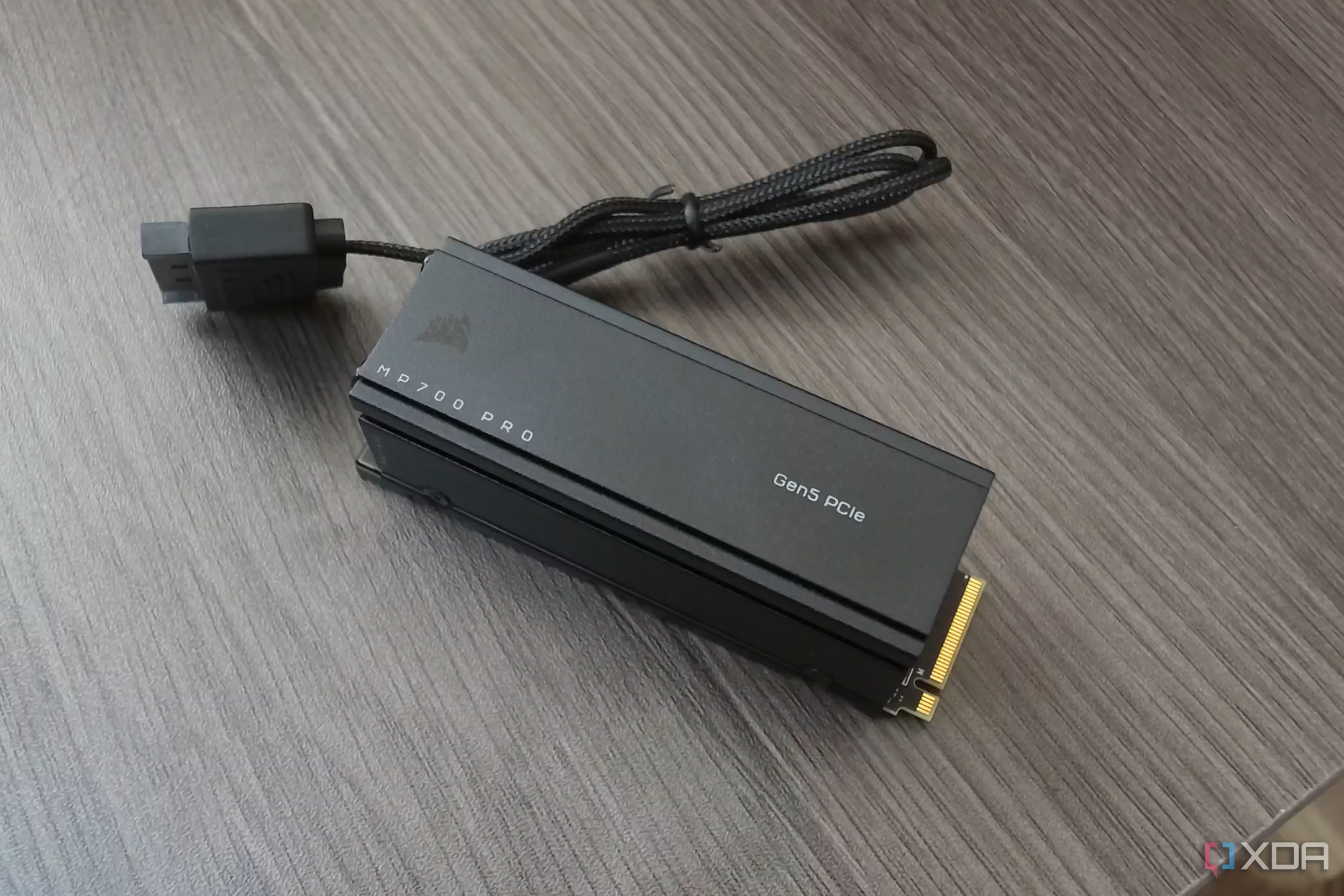The PCIe (Peripheral Component Interconnect Express) interface is one of the most important interconnects that allows you to pair components like GPUs, SSDs, capture cards, and more to your computing device. In the past few months, PCIe 5.0 has become a lot more common on modern motherboards and SSDs, and the new standard has brought plenty of performance improvements to the fourth-gen PCI Express interface.
But are the differences in data transfer speeds, bandwidth, and frequency really making an upgrade from PCIe Gen 4 worthwhile for the average consumer? There's a lot to unpack when it comes to PCI Express 5.0, so here's everything you need to know about the newest high-speed expansion bus.
What is PCIe 5.0?
The next-gen interface standard
PCIe 5.0 or Gen 5 is essentially just a new standard of PCIe that brings double the amount of data transfer compared to PCIe 4.0 or Gen 4. This enables higher performance on pretty much all PCIe peripherals, including SSDs and — to a certain extent — GPUs. Both AMD's AM5 and Intel's LGA 1700 motherboards support PCIe 5.0 to varying degrees.
On the components side, plenty of PCIe 5.0 SSDs have started appearing since mid-2023, though PCIe 5.0 GPUs are still absent. To take advantage of PCIe 5.0, both ends of the connection need to support it; if you have a PCIe 5.0 bus on your motherboard but a PCIe 4.0 SSD (or vice versa), the drive will run at PCIe 4.0 speeds.
As a side note, you've probably heard about PCIe 5.0 PSUs, and you might be wondering what that even means since PSUs deliver power, and have nothing to do with actual data transfer. The PCIe 5.0 specification and guidelines for devices that use it also defines how new ATX 3.0 PSUs and the new 16-pin 12VHPWR cable are supposed to work. Basically, all you need to know is that a PCIe 5.0 PSU is not necessary to power a PCIe 5.0 device; what the PCIe 5.0 branding really means is that it has a native 16-pin connector.
PCIe Gen 5 vs PCIe Gen 4
Not quite the upgrade you're hoping for
PCIe Gen 4 is the current standard that's supported by a majority of processors and motherboards out there, and while it was impressive when it came out, we're starting to hit the point where it's bottlenecking performance. For example, most SSDs come in the M.2 NVMe form factor, which means they only have access to four lanes. At PCIe 4.0 speeds, that's 8GB/s of constant data transfer, and the fastest SSDs you can buy are approaching that 8GB/s limit. A PCIe 5.0 SSD has double that amount to spread its wings: 16GB/s. A PCIe 5.0 device with 32 lanes has 128GB/s of bandwidth, and that's much faster than devices using older versions of PCIe.
|
PCIe Generations |
Bandwidth |
Gigatransfer |
Frequency |
|---|---|---|---|
|
PCIe 1.0 x32 |
8GB/s |
2.5GT/s |
2.5GHz |
|
PCIe 2.0 x32 |
16GB/s |
5GT/s |
5GHz |
|
PCIe 3.0 x32 |
32GB/s |
8GT/s |
8GHz |
|
PCIe 4.0 x32 |
64GB/s |
16GT/s |
16GHz |
|
PCIe 5.0 x32 |
128GB/s |
32GT/s |
32GHz |
So, should you upgrade to PCIe 5.0 components? Ultimately, a product is judged by what it can actually do rather than what it can theoretically do. It's undeniable that PCIe 5.0 needs to exist in order for faster devices to get developed, but just having PCIe 5.0 doesn't make a GPU or SSD immediately better. That's especially true for GPUs, and it's unlikely that PCIe 5.0 will be a game changer for graphics cards, since they usually come with more than enough bandwidth already. In fact, even the best RTX 4090 GPUs out there don't need that kind of bandwidth.
However, the hype for PCIe 5.0 SSDs is definitely justified, as the increased bandwidth enables higher transfer speeds in sequential reads and writes, which is what's important when dealing with large files. In fact, we've reviewed plenty of PCIe Gen 5 SSDs here at XDA, including the likes of Crucial T700 and the Seagate FireCuda 540, and they all have shown a pretty good performance improvement over the best from the PCIe Gen 4 lineup, like the Samsung 990 Pro.
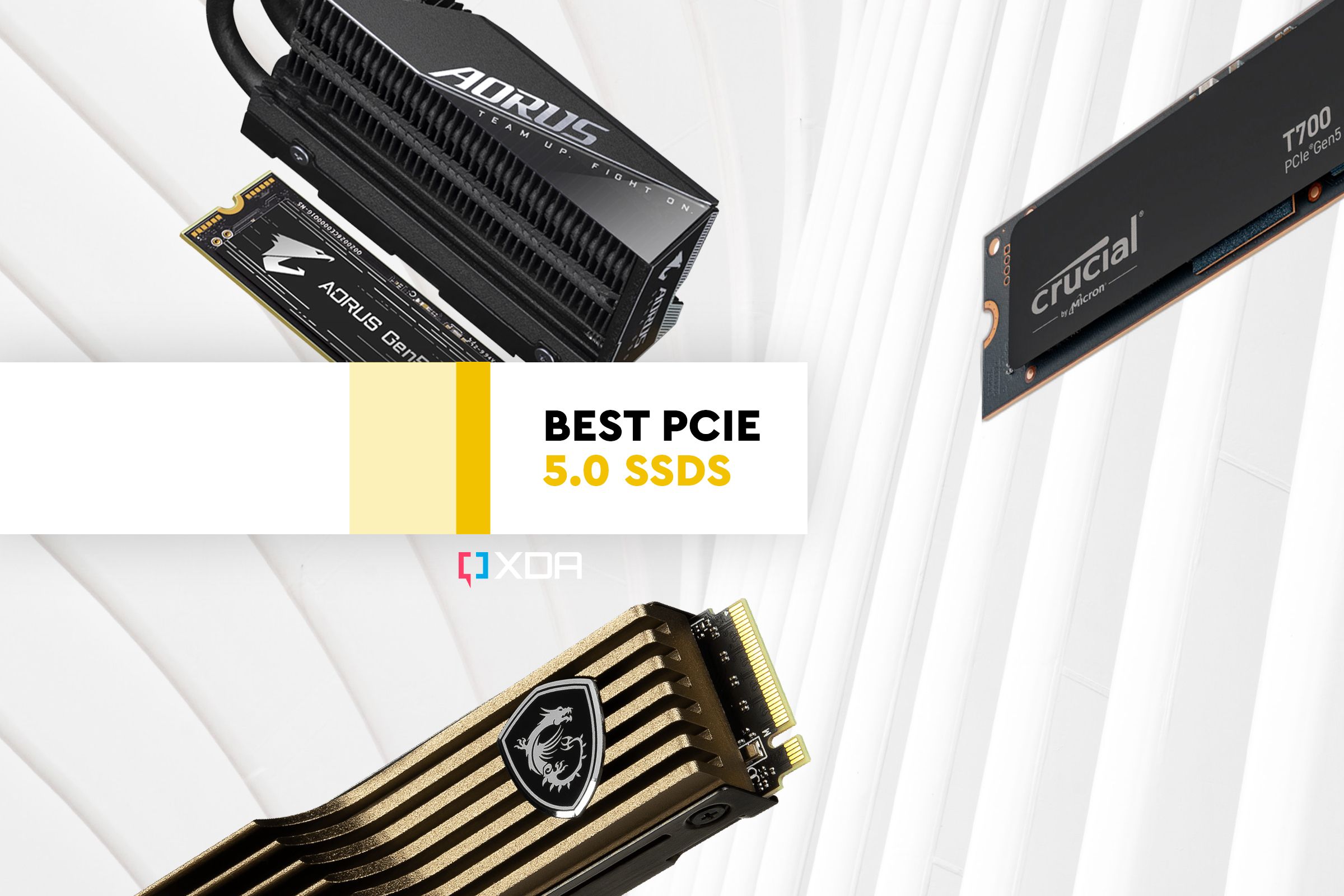
Best PCIe 5.0 SSDs for 2024
The latest standard for speedy SSDs is here, and we've rounded up the best on offer.Perhaps the biggest consideration in upgrading to PCIe 5.0 is the fact that you need a compatible motherboard, and only AMD 600 series motherboards (for Ryzen 7000 processors) and Intel 600 and 700 series boards (for 12th-gen and 13th-gen CPUs) boards support PCIe 5.0. Upgrading your motherboard, CPU, and even memory might be necessary to be able to use PCIe 5.0 devices, which is quite expensive considering this is what you need just to get support. There's also the fact that different motherboards have differing levels of PCIe 5.0 support, and boards with more PCIe 5.0 slots are more expensive.
You also have to consider the thermal implications, considering how the newer PCIe Gen 5 SSDs on the market demand massive heatsinks and even active cooling solutions like the Corsair MP700 Pro SSD highlighted in the gallery below. It's not necessarily a deal-breaker to use these SSDs as the heatsinks are entirely optional, but it's a good indicator of where things are headed in the future.
All this makes staying on a platform with PCIe 4.0 or even 3.0 more lucrative. It's also possible to be on the older platforms with PCIe Gen 4 and get a solid performance out of your PC. Older SSDs are still pretty fast, and they're also perpetually on sale at relatively low prices, while PCIe 5.0 SSDs will almost certainly be more expensive per gigabyte until they hit they go mainstream.
PCIe 5.0 release date
The spec has been around for a while, but what about products?
The PCI Express 5 standard was released back in 2019, and luckily, PCIe 5.0 capable devices have started hitting the market, at least on the SSD front. Drives like the MSI Spatium M570 are pretty good for professionals who can leverage the fast transfer speeds of PCIe Gen 5 in their workloads. Unfortunately, SSDs alone aren't enough to move the needle to push the new PCIe 5.0 spec, and the situation remains rather grim on the GPU front.
Currently, even the fastest graphics cards from Intel, AMD, and Nvidia still utilize the outdated PCIe 4.0 standard. Sure, you can pair them with a PCIe Gen 5 motherboard, but they still won't be able to utilize the faster speed of the new interface. Thankfully, there are rumors that the upcoming Nvidia RTX 5000 series GPUs will feature support for PCIe 5.0. But until they eventually release in 2025, you'll have to make do with the outdated PCIe Gen 4 interface.
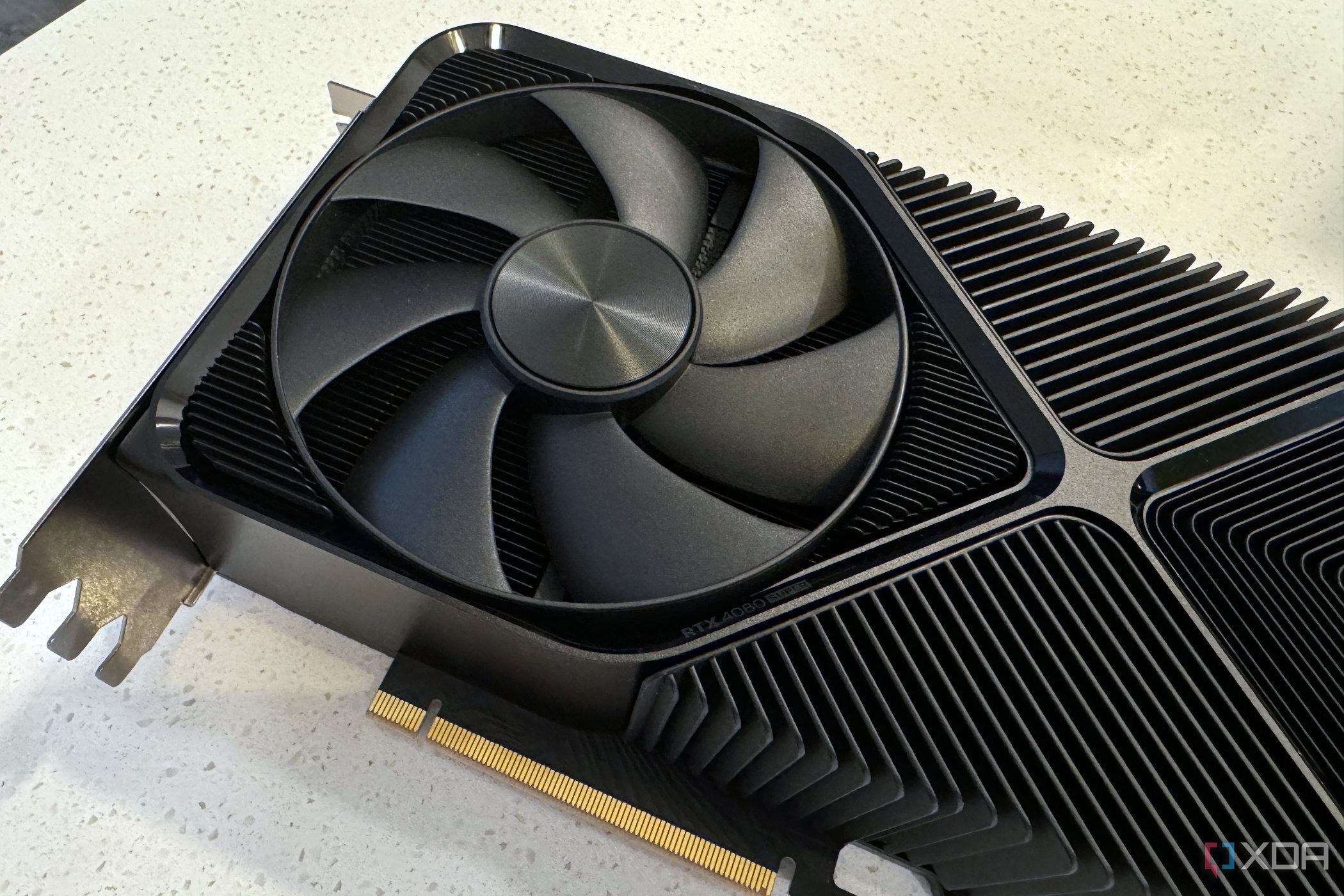
Nvidia GeForce RTX 5000 series: All of the rumors so far
Interested in the new Blackwell GPUs? Here's everything you need to know about themThat's exactly why PCIe 4.0 isn't going away anytime soon. Even the highest-end motherboards in the current generation aren't 100% PCIe 5.0, and most midrange boards mostly use PCIe 4.0. It will be some time before PCIe 5.0 becomes the norm, and once it does, we'll probably see PCIe 6.0 devices popping up, as the specification has actually been out for a year already.
Speaking of PCIe 6.0, you might be wondering when that's coming out. If the schedule for PCIe 5.0 is any indication, we should expect PCIe 6.0 to make its debut around 2025 or 2026. This probably means AM5 motherboards will never see PCIe 6.0 except perhaps on its very last chipset. As for Intel, it's possible that PCIe 6.0 will be introduced on the company's next socket, but it's more likely that Intel will wait for the socket after that if we assume Intel keeps up with its yearly cadence for new CPUs and motherboards.
FAQ
Q: What is PCI Express?
Peripheral Component Interconnect Express is essentially an interface that connects high-speed components to a computing device. Every motherboard has a varying amount of PCIe slots that are used to connect PCIe peripherals like GPUs, SSDs, capture cards, etc. PCIe 1.0 was introduced in 2003, eventually replacing AGP as the most popular interconnect for GPUs. In 2011, PCIe became the foundation of the Non-Volatile Memory Express (NVMe) interface, which is primarily used for SSDs. PCIe 5.0 marks the fifth full generation of the PCIe interconnect.
Q: What are the different PCIe slot configurations?
PCIe slots come in different sizes: x1, x4, x8, x16, and very rarely x32. The number after the "x" tells you how many lanes that PCIe slot has. For example, a PCIe x4 slot has 4 lanes.
Q: Can I insert an old PCIe 4.0 compatible peripheral into a Gen 5 slot?
Yes, PCIe 5 slots are backward compatible which means you can insert older-generation peripherals into the new slot. However, the connection will run at the speed of the slowest device, so a PCIe 4.0 SSD can only run at PCIe 4.0 even in a slot that supports PCIe 5.0.
Q: What is the maximum bandwidth of PCIe 5.0?
PCIe 5.0 has a bandwidth of 3.94 gigabytes per second for each lane. On a device with 16 lanes (like a GPU) that's roughly 63GB/s, and on a device with 4 lanes (like an SSD) that's about 16GB/s.

